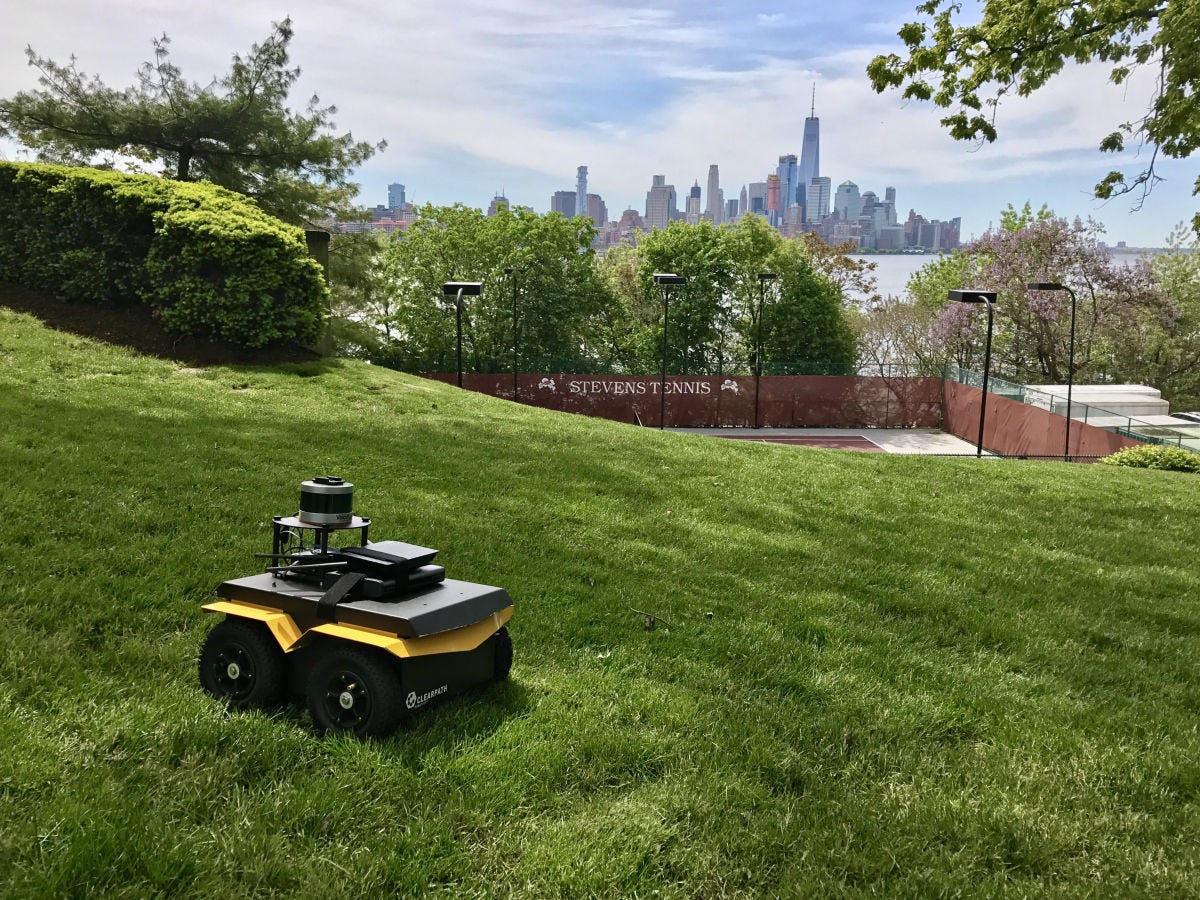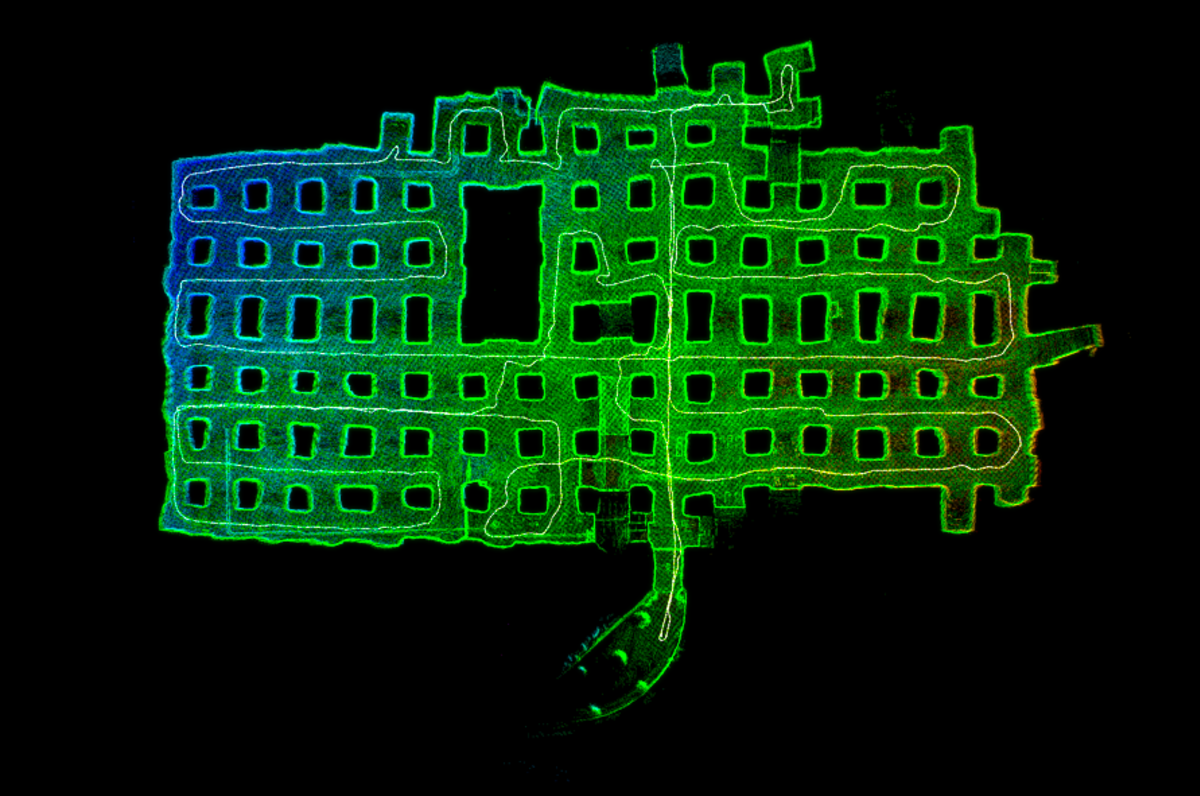
Stevens mechanical engineering professor and recently appointed SIAI director Brendan Englot teaches the next generations of robots to think for themselves
Growing up in Queens, New York with a father who worked as a civil engineer, it was only natural that Brendan Englot would pursue a career in a STEM field.
From prize-winning science fair projects to participation in a victorious city-wide High School Olympiad team, he always knew he’d go into some form of engineering.
But it wasn’t obvious until later that Englot would become a leading expert in intelligent robotic systems — an exploding field that is beginning to transform myriad fields including security, surveillance, inspection, autonomous travel... even aquaculture.
Here's how it happened.
Tough problems, smart copters
Englot's research epiphany didn’t happen until his undergraduate years at MIT, where he joined a robotics group led by pioneering professor and lab director Harry Asada working on a snake-like robot that could achieve multiple degrees of freedom as it worked its way into remote spaces of aircraft to help assemble them.
“I soon realized that robotics was multi-dimensional,” Englot says, “because it requires not only mechanical engineering skills, but also electronics, programming, design, algorithms, AI. I liked the broad-minded skill set.”
That experience whetted his appetite. Later, still at MIT and pursuing his doctorate, he joined another cutting-edge project, this one involving the underwater inspection of ships with autonomous robots.
“These were tough problems we were getting into, and I liked trying to solve them with other members of a really talented multi-disciplinary team,” Englot recalls.
After obtaining his Ph.D. he joined the United Technologies Research Center for two years, working on a variety of robotics projects — including the development of unmanned aircraft for the pioneering helicopter firm Sikorsky. The copters were augmented by both onboard lidar scanners and advanced navigation algorithms.
“But I missed the freedom of academia, of being able to pick your project and focus on it with a team of students,” Englot says.
Teaching robots, on land and in water
So he pivoted, joining Stevens in 2014 and immediately began building collaborations across the university, including with the historic Davidson Lab, where he often tests his underwater robots and collects data as they navigate.
Underwater robots are a booming area of research, since they can travel safely into places that are dangerous or difficult for humans to go such as the undersides of ships, bridges, oil platforms or pipelines. But teaching them to navigate in those places has proven challenging.
“I originally thought about testing robots in the Hudson River,” he says. “But my colleagues at Stevens quickly convinced me that the environment out there is simply too difficult to test reliably in.”
Among Englot’s partners in his underwater-inspection robot research: the National Science Foundation, which awarded him a CAREER Award in 2017 to further algorithmic navigation techniques, and the deep-sea technology firm Schlumberger.
In 2022, a hallmark journal article was published describing how he and his students brought a submersible autonomous robot to a crowded Long Island marina to see if it could map a course through the murky bottom waters — a test the robot passed with flying colors.
The submersible research was also recently featured by the American Society for Mechanical Engineering (ASME) in a new video filmed on campus in Englot's lab.
One offshoot of all the wet-robot work has been a growing suite of projects working with ground-based robots, too, primarily the electric-powered Jackal robot.
“We started using the Jackal more as a proxy platform for the underwater systems, simply because we could test its capabilities 24 hours a day in a lab versus a submersible robot, which you have to put in, take out, be there to monitor,” explains Englot.
“But then it became a growing area of research all its own. We have since developed multi-robot systems based on the Jackal. We have put an arm on one of them.”
In 2021, his group received a $250,000 grant from the New York power utility Con Edison to research robotic inspection and monitoring of electric substations — a tricky and sometimes dangerous task that needs to be done routinely. Investigations will be based on the Jackal, custom-instrumented with sensors, actuators, lidar scanning and navigation algorithms.
“The robot must also be capable of using the same hand-held sensors that technicians and engineers use to monitor the health of a substation, making physical contact with equipment housed within the station,” notes Englot.
“That will require reliable grasping and manipulation, with the use of vision to ensure that the required measurements are being collected as intended.”
Yet another over-ground project, with graduate student Tixiao Shan to create an improved robot-navigation algorithm known as LeGO-LOAM for the Jackal and then make it publicly available — the tests involved rolling the robot around the hilly Stevens campus — even eventually became the most-cited Stevens-authored conference publication of all time.
Divining the future of AI for social good
Recently Englot stepped into a key new leadership role, as well, assuming the helm as director of the Stevens Institute for Artificial Intelligence (SIAI) research center — a three-year term to which he was appointed beginning January 1, 2023.
As director of SIAI, he will oversee the center’s nine clusters of AI research, which range widely from the arts to cybersecurity, from fintech to sustainability, from robotics to healthcare.
One of SIAI’s strengths, he notes, is its interdisciplinary nature and reach.
“I think there is strong potential for us to form numerous large, multidisciplinary team projects within this center,” Englot says. “SIAI is fairly unique in that it draws on faculty members from every single academic unit of Stevens; it’s very broad in scope and membership; and it emerged from bottom up, coming together based on common interests.”
He sees tremendous possibilities for societal benefit in the explosion of AI-based technologies.
"AI is becoming our new search engine — a smarter search engine that is getting closer to not only answering specific questions but giving you a complete first draft of the solution,” concludes Englot.
"Stevens can make tremendous contributions in the ways AI can enhance computer vision and medical imaging, inform critical human and robot decision-making, enhance physical rehabilitation and so on.”


